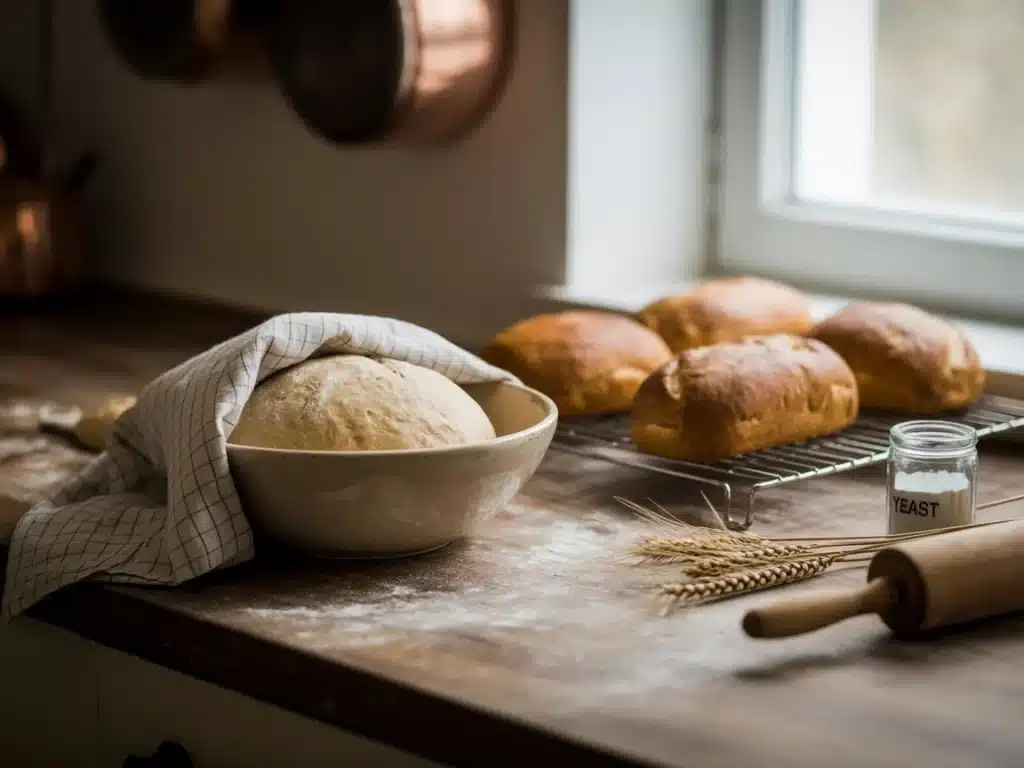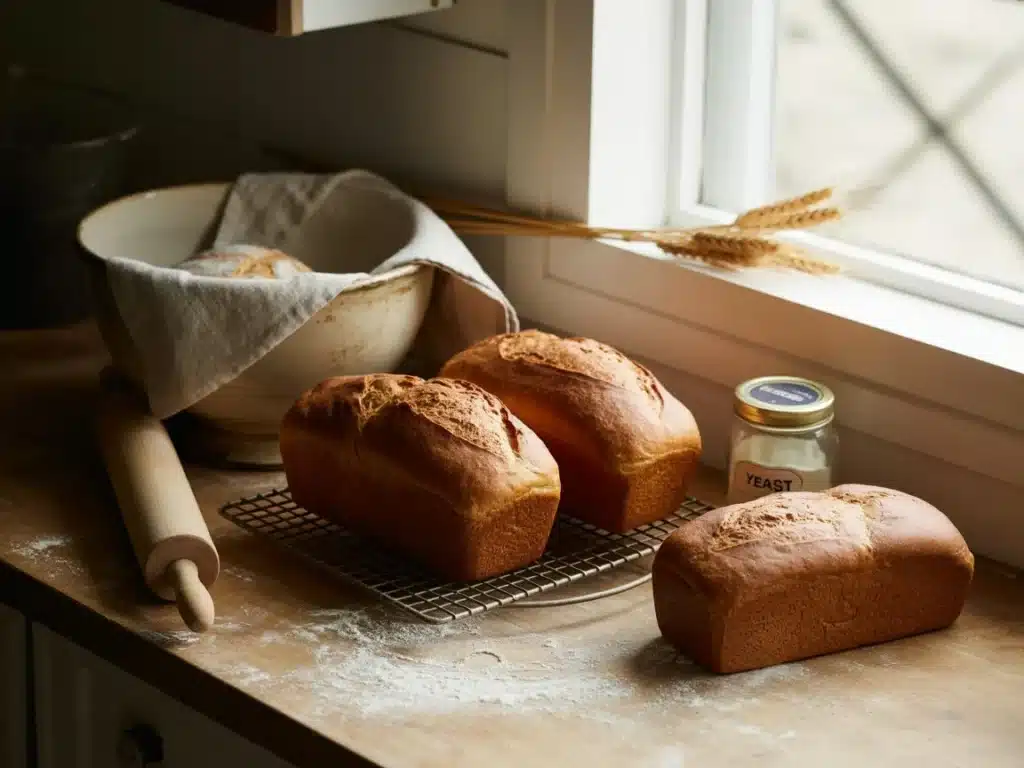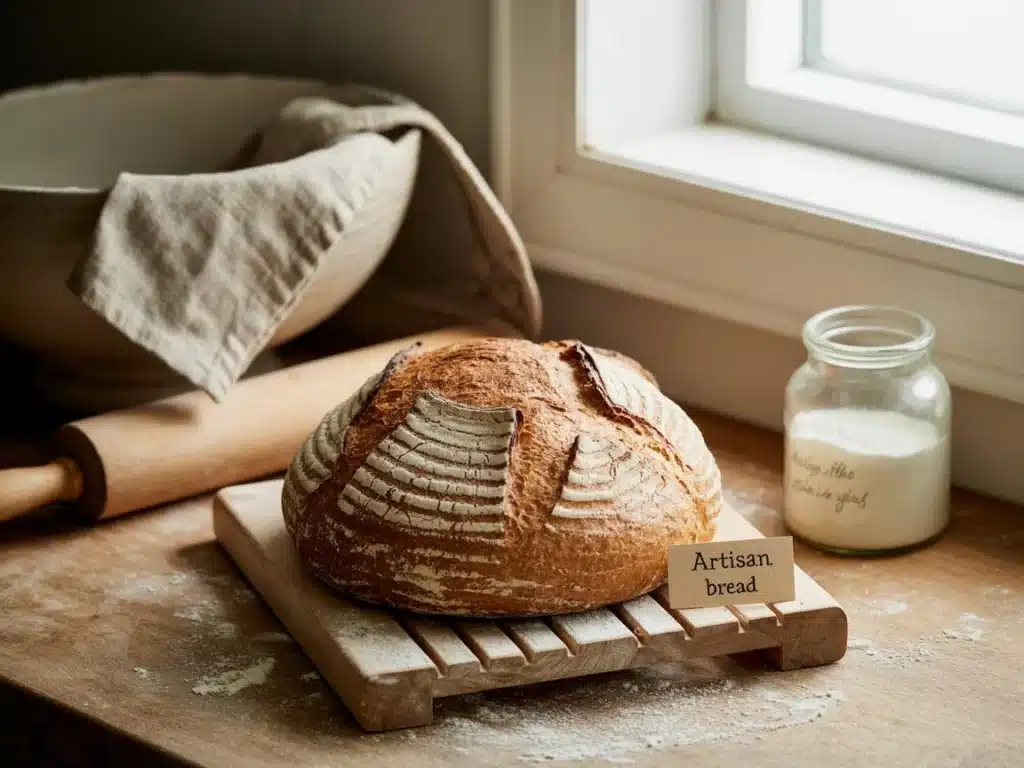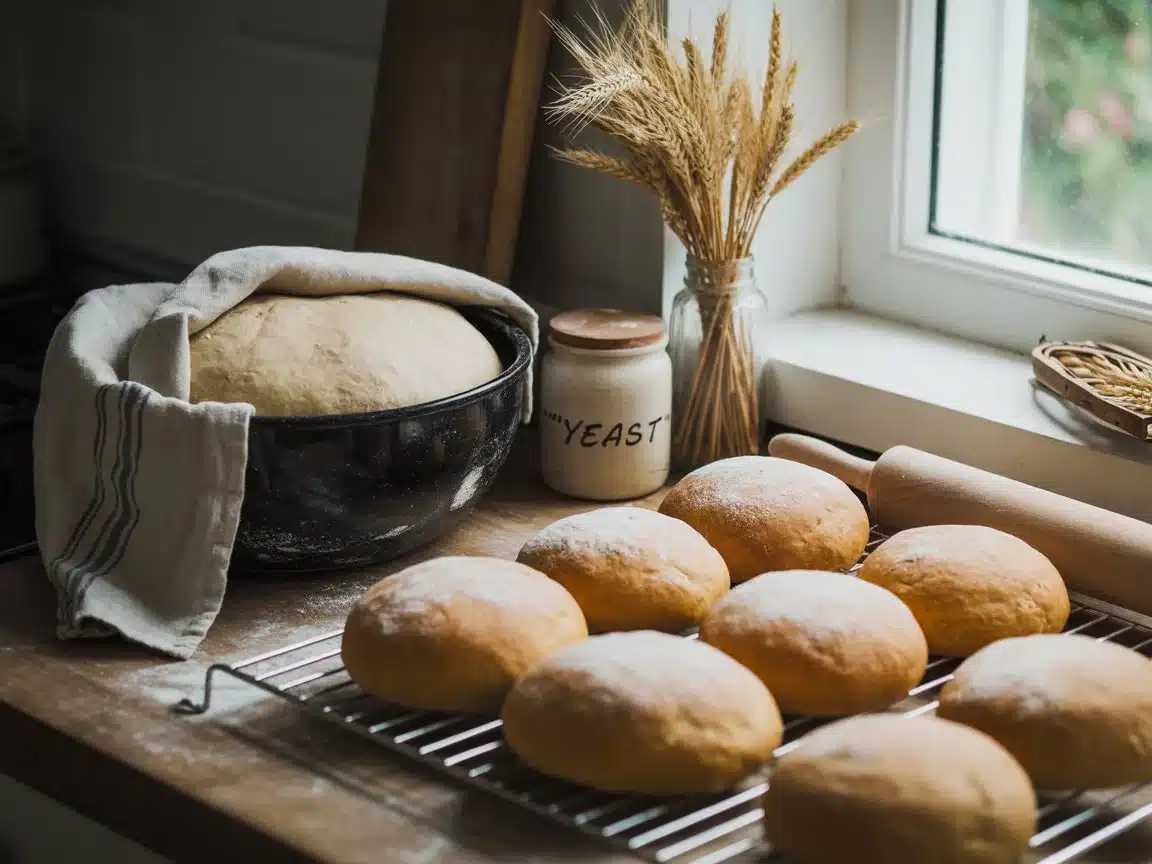Introduction to Rising Recipes
Creating rising recipes that turn out perfectly every time demands more than just following instructions. It requires a combination of precision, understanding, and creativity. Precision is key because baking and cooking rely heavily on exact measurements and timing. Even small deviations in ingredient quantities or oven temperature can affect how well your recipe rises.
Understanding the science behind rising is equally important. Knowing how leavening agents like baking powder, yeast, or whipped egg whites work helps you control the texture and volume of your baked goods. For example, yeast ferments sugars to produce carbon dioxide, which makes bread dough expand, while baking powder releases gas quickly during baking to lift cakes.
Creativity comes into play when adapting recipes to suit your tastes or dietary needs without compromising the rise. You might experiment with different flours or liquids, or try unique mixing techniques to improve texture. Whether you’re aiming for light, fluffy cakes or airy, crusty bread, mastering rising recipes is essential. This comprehensive guide covers everything from the science behind rising, practical tips, common problems and fixes, to scaling recipes up or down. With expert advice and detailed FAQs, it’s designed to support and inspire your culinary journey, ensuring your baked creations rise beautifully every time.
The Science Behind Rising Recipes
Understanding why rising recipes work the way they do is crucial for mastering the art of baking and cooking. When you know the roles that leavening agents, heat, and moisture play, you gain better control over the process and can troubleshoot issues more effectively. This knowledge allows you to create dishes with the ideal lift, texture, and volume every time.
At the heart of rising recipes are leavening agents. These ingredients produce gases that cause doughs and batters to expand. For example, baking powder and baking soda release carbon dioxide when they react with moisture and heat, creating bubbles that lift the mixture. Yeast works a bit differently by fermenting sugars, producing carbon dioxide and ethanol. This gas gets trapped in the dough’s structure, causing it to rise slowly over time. Another natural leavening method involves whipped egg whites, which incorporate air and create tiny pockets, giving cakes and soufflés a light, airy texture.
Temperature is equally important. Heat activates leavening agents, causing the gases to expand and the mixture to rise. That’s why proper oven preheating is vital for consistent results; without the right temperature, recipes may not rise as expected. Additionally, the balance of moisture and structure affects rising. Liquids in a recipe help distribute leavening agents evenly, ensuring the gas can form and spread throughout the dough or batter. Meanwhile, gluten proteins in flour create a flexible network that traps these gases, supporting the rise and giving the final product its shape and texture.
Altogether, understanding these key elements—leavening agents, temperature, and moisture—enables you to perfect your rising recipes. With this foundation, you can confidently experiment and adapt recipes, knowing how each component contributes to a successful rise.

Techniques to Perfect Rising Recipes
Perfecting rising recipes involves much more than simply following a recipe’s instructions. It requires mastering several key techniques that ensure your baked goods rise consistently and impressively every time. Attention to detail during preparation, mixing, and proofing makes all the difference between a flat loaf or a fluffy cake and a perfectly risen masterpiece.
Firstly, prepping ingredients correctly is essential. Accurate measurement of ingredients is critical because even small variations can change how the chemical reactions occur during baking. For example, too much or too little baking powder or baking soda can lead to poor rising or an unpleasant taste. Similarly, using fresh leavening agents is a must. Expired baking powder or old yeast often lose their potency, causing dough or batter to rise inadequately. Always check expiration dates and store these ingredients properly to keep them active.
Secondly, the mixing method plays a vital role in achieving the perfect rise. Overmixing batter or dough can be harmful because it deflates the air pockets that give baked goods their volume and lightness. Therefore, it is best to mix just until the ingredients are combined. In yeast-based recipes, kneading is important to develop gluten, the protein that forms a strong structure capable of trapping gases produced during fermentation. Proper kneading results in dough that rises evenly and has a desirable texture.
Finally, controlling the environment where dough proofs is another crucial step. Maintaining a warm, draft-free environment—ideally between 75-80°F—helps yeast activate and promotes steady rising. Drafts or cold temperatures slow down or stop the fermentation process, which can ruin the rise. Using a proofing box or a warm spot in your kitchen can greatly improve your results.
Altogether, by carefully prepping ingredients, mixing properly, and controlling your proofing environment, you ensure your rising recipes turn out beautifully every time.
Common Challenges in Rising Recipes (and How to Solve Them)
Even the most experienced cooks sometimes face challenges with rising recipes. Troubleshooting common issues helps you identify the cause and apply the right solution to achieve perfect results every time.
One frequent problem is flat or dense baked goods. This often happens because of expired leavening agents, such as baking powder or yeast, which lose their effectiveness over time. To prevent this, always check the freshness of your ingredients before starting. Using an oven thermometer is also essential since incorrect oven temperature can cause your recipes not to rise properly. Many ovens have inaccurate built-in thermometers, so measuring the actual heat inside helps ensure consistent baking conditions.
Another issue is over-risen bakes, which can collapse or become gummy. This usually results from over-proofing the dough or using too much yeast. To avoid this, carefully follow the recommended proofing times and yeast amounts in your recipe. Proofing dough for too long lets the yeast consume all the sugars, causing it to lose strength and collapse during baking.
Uneven rising can be frustrating but is often due to uneven heat distribution in the oven. This means one part of your bake rises faster than another, creating an irregular texture or shape. To combat this, rotate your pans halfway through the baking process. Doing so ensures all sides receive equal heat exposure, leading to more uniform results.
Altogether, these troubleshooting tips will help you tackle common pitfalls in rising recipes. By checking ingredient freshness, monitoring oven temperature, managing proofing carefully, and ensuring even baking, you can avoid disappointments and consistently create beautifully risen dishes.

Popular Rising Recipes to Try
Experimenting with a variety of rising recipes is one of the best ways to improve your baking skills and deepen your understanding of how different techniques affect rise and texture. By trying a range of breads, cakes, and pastries, you’ll gain valuable hands-on experience that helps refine your methods and builds confidence in the kitchen.
Starting with breads, classic sourdough is a standout recipe for mastering the art of natural fermentation. It produces tangy, chewy loaves with a crusty exterior and beautiful air pockets inside. Working with sourdough teaches patience and attention to detail, as the slow rise and wild yeast require precise timing. Another great bread to experiment with is focaccia. This simple, flat bread allows you to practice achieving a light, airy texture and an even rise without complex steps. Its versatility makes it a rewarding choice for learning how yeast and dough hydration impact rise.
In the cake category, angel food cake is a must-try for learning how to whip egg whites to perfect peaks. This cake relies entirely on air trapped in the egg whites for its rise, making it an excellent example of how technique can replace chemical leaveners. Another popular cake to master is the layered sponge cake. This recipe focuses on balancing the right amount of leavening with a sturdy yet tender structure, helping you understand the relationship between ingredients and rise in delicate cakes.
For pastries, croissants provide a complex but highly rewarding challenge. They require skillful lamination—folding butter into dough—and yeast fermentation, creating flaky, buttery layers with a beautiful rise. Lastly, éclairs use steam as a natural leavening agent, puffing up the choux pastry to create a hollow, airy shell perfect for filling.
Trying these diverse rising recipes will help you build essential skills and confidence, ensuring your baked goods rise beautifully every time.
Scaling Recipes: Tips and Challenges
Scaling rising recipes—whether doubling or halving—requires careful adjustments to maintain their quality and perfect rise. It’s not as simple as just multiplying or dividing ingredients. Because rising recipes rely heavily on precise chemical reactions, any imbalance can affect the texture, rise, and overall success of the dish.
Can you double rising recipes? The answer is yes, but with caution. Some ingredients, especially leavening agents like baking powder or yeast, do not scale linearly. For example, doubling baking powder may cause the batter to rise too quickly and then collapse. Therefore, when scaling rising recipes, it’s important to adjust these ingredients thoughtfully rather than simply doubling them.
Certain rising recipes do not scale well. Delicate baked goods, such as soufflés or angel food cakes, depend on specific ratios and precise techniques to rise properly. When these recipes are scaled up or down, their structure and rise may be compromised. Consequently, it’s best to avoid making major changes to recipes that require intricate rising processes.
When scaling down rising recipes, accuracy becomes even more important. Using a digital kitchen scale ensures precise measurements of ingredients, which is crucial for the chemistry involved in rising. Additionally, texture changes are common when reducing fats or liquids, both of which affect how the recipe rises. Adjustments might be needed to keep the balance intact.
In summary, scaling rising recipes successfully demands understanding the role of each ingredient and its impact on the rise. By carefully balancing proportions, especially leavening agents, and paying attention to texture, you can modify rising recipes without sacrificing quality or rise. This knowledge empowers you to create perfectly risen dishes, regardless of the batch size.

Frequently Asked Questions (FAQs)
What Ingredient Makes Something Rise?
Leavening agents like baking powder, yeast, and whipped egg whites provide the necessary lift.
Can You Double Baking Recipes?
Yes, but proceed with caution. Adjust leavening agents and liquids proportionally to avoid failures.
Can All Recipes Be Scaled Up or Down?
Not always. Recipes reliant on precise chemical reactions, like soufflés, may not adapt well.
Why Can Some Recipes Not Be Doubled?
Doubling can alter cooking times and ingredient interactions, leading to inconsistent results.
What Problems Might Arise When Converting Recipes?
Issues include texture changes, uneven cooking, and over-risen results.
Which Types of Recipes Will Not Scale Well?
Delicate items, like custards and meringues, often struggle with scaling.
How to Reduce Ingredients in a Recipe?
Divide all measurements evenly. For example, halve or quarter each ingredient.
What Are the Limitations of a Recipe?
Ingredients, equipment, and environment can all impose constraints on achieving perfection.
How Do You Categorize Your Recipes?
Recipes can be grouped by cuisine, preparation style, or primary ingredient for easy navigation.
For more recipes click on lin below:

